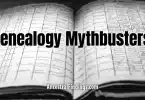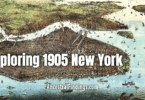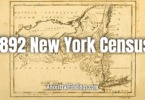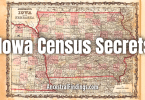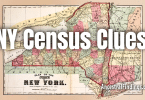By the time New York took its 1915 state census, the state was in the midst of dramatic social, political, and demographic shifts. The five years since the 1910 federal census had brought even more industrial growth, continued waves of immigration, and the rise of new housing, labor, and reform movements. Capturing all of this change in the middle of a federal census decade, the 1915 New York State census stands as one of the most insightful tools available for those researching family history in early 20th-century New York.
This census was conducted on June 1, 1915, by the state’s Department of Efficiency and Economy—a short-lived agency created to oversee and modernize state operations. The count included over 10.5 million residents and gave a mid-decade view of one of America’s most dynamic regions. It’s more than just names and numbers—it’s a snapshot of what life looked like in a time of incredible transformation.
What the 1915 Census Collected
The information gathered in 1915 largely echoed what was collected in 1905 but was slightly refined. The census enumerators recorded:
- Full name
- Relationship to head of household
- Race
- Gender
- Age
- Nativity (state or country of birth)
- Citizenship status (alien, naturalized, or native-born)
- Occupation
- Literacy (ability to read and write)
- Years of residence in the United States and in New York
One key feature that stands out in this census is its recording of both U.S. and state residence duration. This is crucial for understanding internal migration—how long someone had been in the country overall and how long they’d lived in New York specifically. This can help researchers differentiate between new immigrants and people who had relocated within the country.
Why This Census Matters
The 1915 census was taken during a time when the country was inching closer to involvement in World War I. Immigration was still strong, though the patterns were beginning to shift. Many immigrants arriving at Ellis Island were still coming from southern and eastern Europe—places like Italy, Russia, and Poland. However, there was growing political tension, and some restrictions were beginning to be proposed, particularly in response to rising nationalism.
For people researching their family history, the 1915 census is a powerful bridge between the federal records of 1910 and 1920. Those ten years saw sweeping changes in employment, housing, and even survival. Some people moved to cities in search of industrial jobs. Others left for different states or countries. Children born after 1910 may show up for the first time in 1915. Older relatives who died before 1920 may appear here for the last time.
Genealogical Insights from the 1915 Census
The occupation listings are especially valuable. In major cities like New York, Buffalo, and Rochester, factories and industry dominated the employment landscape. Seeing a family member listed as a machinist, textile worker, or longshoreman helps paint a picture of their daily lives. And if multiple family members were employed, it can reveal how entire households contributed to their financial stability.
Household relationships also make this census stand out. The listing of relationships within each home helps researchers understand more than just who lived together. It can confirm or suggest maiden names, remarriages, blended families, or in-laws. In some cases, boarders and lodgers listed at the end of a household entry may actually be extended relatives.
Additionally, the 1915 census is invaluable when tracking immigrant assimilation. The designation of citizenship status—whether someone was a naturalized citizen or still an alien—gives hints as to when they may have arrived and whether to look for naturalization paperwork. Paired with the years in the U.S., you can zero in on possible arrival dates to search for passenger lists or border crossing documents.
Where to Access the 1915 Records
Digitized images of the 1915 New York State census are available through several sources:
- Ancestry.com: Indexed and searchable by name and location
- FamilySearch.org: Free access, with varying levels of indexing
- New York State Archives: Original microfilm available for on-site research or interlibrary loan
- Local libraries and genealogical societies: Some may have microfilm or bound transcripts for local regions
For those working in city environments, pairing the census with city directories and ward maps can help narrow down searches and confirm locations—especially helpful when surnames have been misspelled or misindexed.
New York in 1915: A Changing Landscape
Understanding the state’s historical context adds even more meaning to the records. In 1915, New York was bustling with change. The state legislature had just passed labor protections following the Triangle Shirtwaist Factory fire in 1911. Reformers were pushing for better housing, education, and sanitation. The women’s suffrage movement was gaining momentum. In fact, New York would grant women the right to vote just two years later.
In New York City, subways expanded into Brooklyn and the Bronx. The city’s boroughs—consolidated just over a decade earlier—were now fully integrated into the infrastructure of the city. Population density soared in areas like the Lower East Side and Harlem. Meanwhile, upstate cities like Albany and Syracuse were also seeing economic and population booms.
The census reflects this growth. Multi-family dwellings, extended households, and boarding houses were common. You can often find several households sharing an address, especially in working-class neighborhoods. This provides a window into how families managed financially and socially in tight urban quarters.
Common Research Challenges
As with all historical records, there are some limitations. Handwriting quality can vary widely. Immigrant names may be spelled phonetically or with regional variations. And though the census was supposed to count everyone, some individuals were likely missed—particularly transient or impoverished populations.
Despite these drawbacks, the 1915 census remains an essential piece of the puzzle. When analyzed in context, even imperfect entries can yield important clues.
Conclusion: Preserving a Moment of Movement and Growth
The 1915 New York State census offers a remarkable glimpse into a population on the cusp of global war, amid a country shifting culturally, politically, and economically. It serves not only as a bridge between federal records, but as a unique documentation of an era that shaped modern New York.
As part of our Lost In Between series, this record shows just how much life happened between the significant federal counts. These snapshots fill in the missing pages, giving us access to the families, workers, and communities who built the world we live in today.
If you haven’t looked at the 1915 census yet, it’s time to explore. You never know what you’ll discover waiting in those handwritten lines.

